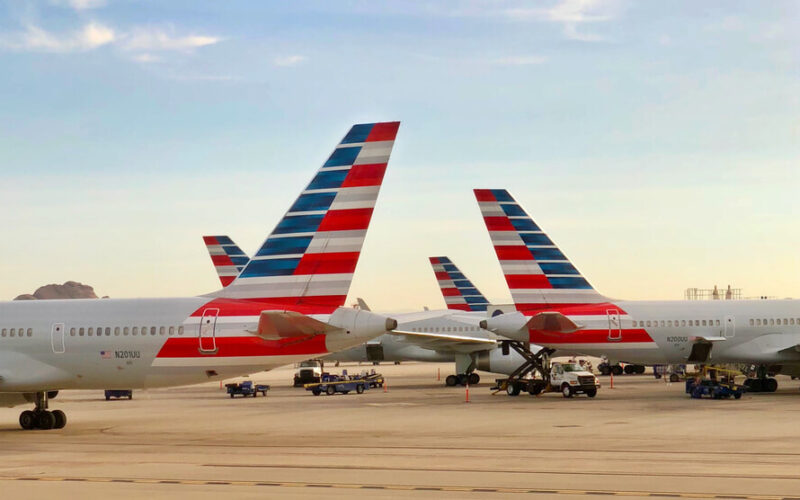The outbreak of COVID-19 has touched every airline in the industry, no matter large or small. While the impact could be judged on a case-by-case basis, most carriers around the world were forced to make huge changes to their flight network.
With passenger demand on a free fall and governments around the world imposing strict travel restrictions to contain the outbreak, airlines had no other choice but to keep their aircraft on the ground to save on operating costs: if no passengers are present onboard and no belly cargo is flown, flying aircraft empty is quite pointless.
But how has the coronavirus impacted the fleets of the Top 5 biggest airlines in the world by fleet size?
5. China Southern Airlines
The largest out of the top three Chinese national carriers and the only airline in the country to operate the illustrious Airbus A380, was arguably at the center of the outbreak when COVID-19 started in December 2019. However, the total fleet has already shrunk since the end of 2019, with China Southern possessing five aircraft fewer than compared to the end of the year.
Furthermore, China Southern Airlines (ZNH) had faced a shortage of aircraft due to the Boeing 737 MAX groundings. Prior to the ban on commercial flights with the type, Boeing delivered 16 MAX aircraft to the Chinese carrier, with 18 more that were manufactured and parked all around the United States, as the planemaker was not able to deliver these before the groundings.
Coronavirus forced another 99 aircraft to be parked, as demand for travel within China and out of the country has plunged.
However, the good news is that at least the domestic network within the country is recovering, according to the latest data presented by the International Air Transport Association (IATA).
Currently, China Southern Airlines (ZNH) has 133 parked aircraft as of March 25, 2020, planespotters.net data indicates.
4. Southwest Airlines
The largest low-cost carrier in the world and the largest operator of the Boeing 737, Southwest Airlines (LUV) had a fair share of difficulties in 2019. The significantly reduced capacity due to the 737 MAX groundings forced the airline to prolong operations of its older 737s. Despite the difficulties and shrinking capacity (-1.6% in 2019 year-on-year), the airline managed to achieve a profitable 2019, with a net income of $2.3 billion.
Like for many airlines, Southwest’s 2020 started out with a fair share of difficulties. In an update to its investors, the carrier indicated that its month-to-date load factor was 67% through March 15, 2020, with the number going downwards in recent days to about 50%. From April 14 to June 5, 2020, Southwest Airlines (LUV) is planning to reduce capacity by at least 20%. In a separate filing to the United States Securities and Exchange Commission (SEC), dated March 5, 2020, the company estimated a drop of $200-300 million in revenues in Q1 2020.
Nevertheless, Southwest Airlines (LUV) still operates a large scale: out of the total 742 aircraft it currently has, the Dallas Love Field Airport (DAL) based airline parked 85 of them, including 31 Boeing 737 MAX aircraft.
3. United Airlines
One of the oldest airlines in the United States, United Airlines survived quite a few crises throughout its history. From the several oil price shocks to the slump following the events of September 11, 2001, United has remained strong and grew into one of the largest airlines in the world.
Nevertheless, even the big boys are forced to make adjustments. United cut its international schedule by 95% in April 2020 and the domestic network was reduced by 42%, as announced on March 20, and March 17, 2020, respectively. While the current situation is quite grim, the latest update by the airline on March 21, 2020, indicated that United will reinstate some international flights to help passengers get home, providing the airline with an opportunity to somewhat increase its cash flow during a difficult period.
Following the severe reductions in operated flights, United Airlines so far has parked 178 aircraft out of the total 800 currently in its fleet.
2. Delta Air Lines
Based in Atlanta Hartsfield International Airport (ATL), Delta Air Lines met 2020 with high hopes and expectations, as 2019 was a very successful year. The airline was not impacted by the 737 MAX groundings, as it had none on order, being the only airline out of the Big Four in the United States not to sign up for Boeing’s newest narrow-body.
But the Coronavirus outbreak has forced the airline to store quite a large number of aircraft in its fleet. Without including its affiliate partners in Delta Connection, the company stored 268 aircraft out of the 913 total in its fleet.
Moreover, Ed Bastian, Chief Executive Officer of the airline, stated in a memo to Delta’s employees that the company would accelerate the retirement of older aircraft, most notably the MD-88/90s and some of the Boeing 767s.
1. American Airlines
The largest airline in the world for quite a few years now, American Airlines (A1G) (AAL) was also forced into making swift changes to its operations during the crisis moment. Including its first cargo-only flight since 1984, when the Dallas/Fort Worth (DFW) based airline operated two Boeing 777-300 aircraft from DFW to Frankfurt Airport, Germany (FRA) on March 20, 2020. However, it also planned to ground a significant amount of aircraft: with a 75% international and a 20% cut in April and 30% in May in its domestic capacity, American Airlines (A1G) (AAL) so far parked 175 aircraft out of the total 947 in its fleet. In the near future, it plans to temporarily store around 450 of its jets, reported The Dallas Morning News.
Interestingly enough, American Airlines (A1G) (AAL) recently announced that it would increase the size of its fleet with 22 new Boeing 787 Dreamliners in 2020 and 2021.

